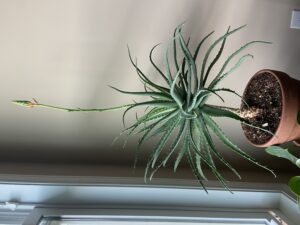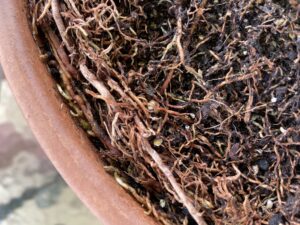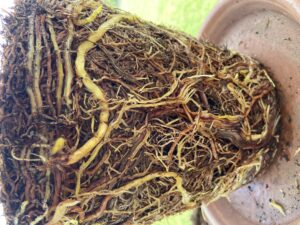Root-Bound Plants
go.ncsu.edu/readext?945678
en Español / em Português
El inglés es el idioma de control de esta página. En la medida en que haya algún conflicto entre la traducción al inglés y la traducción, el inglés prevalece.
Al hacer clic en el enlace de traducción se activa un servicio de traducción gratuito para convertir la página al español. Al igual que con cualquier traducción por Internet, la conversión no es sensible al contexto y puede que no traduzca el texto en su significado original. NC State Extension no garantiza la exactitud del texto traducido. Por favor, tenga en cuenta que algunas aplicaciones y/o servicios pueden no funcionar como se espera cuando se traducen.
Português
Inglês é o idioma de controle desta página. Na medida que haja algum conflito entre o texto original em Inglês e a tradução, o Inglês prevalece.
Ao clicar no link de tradução, um serviço gratuito de tradução será ativado para converter a página para o Português. Como em qualquer tradução pela internet, a conversão não é sensivel ao contexto e pode não ocorrer a tradução para o significado orginal. O serviço de Extensão da Carolina do Norte (NC State Extension) não garante a exatidão do texto traduzido. Por favor, observe que algumas funções ou serviços podem não funcionar como esperado após a tradução.
English
English is the controlling language of this page. To the extent there is any conflict between the English text and the translation, English controls.
Clicking on the translation link activates a free translation service to convert the page to Spanish. As with any Internet translation, the conversion is not context-sensitive and may not translate the text to its original meaning. NC State Extension does not guarantee the accuracy of the translated text. Please note that some applications and/or services may not function as expected when translated.
Collapse ▲Though we may not see it, plant roots are growing underground. Roots often grow just as much under the soil as their above ground counter parts. Healthy root systems are key to advantages such as connection to surrounding plants, resource availability, and stability. Container plants, however, can occasionally have too much root growth. Leading to a condition called root/pot bound.
Many plants grown in containers can become root bound. Often house plants that remain in the same pot for many years fall victim. Also common are containerized landscape plants. Each being left in the container for many growing seasons. Plants that become root bound have excessive root growth. The roots have displaced most of the media in the container. Leading to the container not retaining water. One of the tail-tail signs of the condition is plants will become droopy and exhibit signs of drought stress.

Figure 1: Aloe vera beginning to bloom April 2022
My Aloe vera has been in the same pot going on 4 years (figure 1). This spring I noticed the leaves were much thinner than usual. It also began to turn a red color near the tips and bases of the leaves. Upon further investigation I found thick roots encircling the entire edge of the pot (figure 2). I also saw that the roots were coming out the drainage hole.

Figure 2: Thick roots encircling the pot
At this point I knew I had to re-pot. I decided that I wanted it to remain in the same pot. I removed the top portion and propagated it. This will decrease the amount of stress the root section will take from root pruning. Next, I removed the root section from the pot and found a very vigorous root system (figure 3). In some situations, you may have the break the pot to remove the plant. Once the plant is removed break apart the roots as much as you can. Taking up to 1/3 of the root mass away. This can then be placed back into the same container it came from backfilling with fresh new media. The plant should rebound and make a full recovery with some time and care.

Figure 3: Root system removed from the pot




